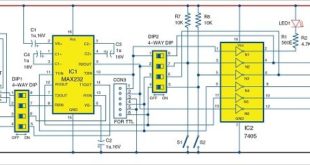Upgraded wireless communication systems, latest navigation technologies and advanced flight control programs are the key ingredients for advanced applications of drones and UAVs.
Wireless technology plays a major role in controlling unmanned aerial vehicles (UAVs) and drones, by offering safe flying operations. Mesh radio is increasingly being employed for commercial and military use. It enables drones to communicate with other drones, vehicles and human beings. Stable command and control link with the pilot on ground are needed for safely operating drones.
Range extender technology is used to extend the range of communication between a smartphone or tablet and the drones in an open, unobstructed area. Transmission distances can reach up to 700 metres. Range extenders have unique media access control (MAC) addresses and network names (SSIDs).
Navigation technologies for wireless control
Drones use highly-accurate navigation systems for surveying landscapes, search-and-rescue operations and building 3D maps, among others. These can fly in both satellite and non-satellite modes. Drones utilise Global Navigation Satellite System (GNSS) to track their position and navigate in self mode. Fig. 1: GNSS for drones (Credit: www.questuav.com)
Advertisement
GNSS is a satellite system that is used to pinpoint the geographical location anywhere through a receiver. It utilises a constellation of orbiting satellites working in conjunction, through ground station networks. Each satellite transmits coded signals at fixed intervals. This signal information is converted by the receiver into position, time and velocity, which is later utilised to calculate the exact position of the transmitting satellite and its distance.
A drone, which is ready to fly, records the home coordinates once it receives enough signal from GNSS satellites. Some drones seek location through GPS satellites. This allows drones to fly in ready-to-fly mode when their compasses are calibrated and these find more than six satellites. Fig. 2: Breadcrumbs communicating peer-to-peer (Credit: www.rajant.com)
Latest wireless communication technologies
Vikas Jain, team leader, Cyient, says, “Latest wireless technology used is Wi-Fi in 2.4GHz to 5.47GHz frequency band, for general control and general sensor-like drone payloads. Where payloads like video and cinematography are concerned, latest technologies include first person view (FPV), ocusync and light bridge video transmission. These technologies meet cutting-edge demand for long distances, and provide very high-quality video transmission in HD.
“Developments and possibilities of using 7GHz frequency band and a dedicated frequency band for drone application are also under development. LoRa-based drone technology development can provide good meshing and networking options for drones.”
Don Gilbreath, Rajant Corp., says “We provide rugged mesh radios for military and extreme temperature commercial locations like open pit mines, oil fields and ship ports.
“With regards to UAVs, we have DX-1 development kit. It is a small, light radio with antennae that weigh 600 grams. We provide extremely strong encryption options that offer different frequencies—licensed, unlicensed and military bands—which help with high performance use. We test detection technologies for video, lidar, radar and sonar, too. Real-time kinematics for UAVs is compatible with existing customers’ survey-grade base stations. It yields two-to-three-centimetre location accuracy, which is much better than GPS native.”
New wireless connectivity options
Kinetic mesh (KM) enables industrial sectors (mining, military, oil and gas, and public safety) to establish highly-reliable and secure communications to enforce, protect and serve their missions. Mesh technology is perfectly suited for fleet and swarm applications in autonomous vehicles. In KM, there is no central control node, so routes are built automatically. As an asset moves, Instamesh makes multiple connections simultaneously and directs data packets through those connections.
In a KM network, multiple redundant radio frequencies and any-node-to-any-node capabilities are deployed. This helps to continuously and instantly route data via the best available path and frequency, during congestion or interference, keeping the drones in the air and on task.
With a wireless KM radio attached to it, the drone can tap into the network for long-distance flights. It can create a pop-up connection tower, as long as it is within range of the network’s control centre, extending the network and allowing other applications to continue to run.
KM delivers 256-bit end-to-end encryption. So, when information flows through the mesh to another node, it remains encrypted all the way. It ensures privacy and security by encrypting the information until it is delivered to its destination. Data is so encrypted that an attacker cannot analyse the traffic and nodes used for communication with other devices.
KM provides per-hop authentication for each packet that detects data tampering. It also ensures protection of an information packet received by a node against packet-injection cyber attacks. Hackers use Wi-Fi to detect other drones in its range and inject Wi-Fi packets into the victim drone’s connection. This makes the drone deauthenticate from its remote controller, taking it under control. Such packet-injection attacks are prevented by KM technology.
Intelligent flight-control modes
UAVs or drones becoming more advanced are leading to more easily controllable flights. Latest drones are equipped with return-to-home technology, which can be activated by pressing a button on the remote controller or app.
Low battery levels and loss of transmission between the UAV and remote controller is known as fail-safe function. To prevent accidental flights and increase flight safety, latest drones includes a no fly zone feature, such as in DJI drones. Manufacturers can change or update this no fly zone technology using firmware updates.
There are other intelligent flight modes like obstacle avoidance, course lock, attitude, position, gesture, sport, tripod, terrain follow and active track.
FPV technology utilises radio signals to transmit and receive live video. The receiver of live video signals can be a remote control unit, smartphone device, computer or tablet. The drone has a multi-band wireless FPV transmitter with an inbuilt antenna. Fig. 3: Common uses of UAVs (Credit: www.semanticscholar.org)
Ernest Earon, co-founder and chief technology officer, PrecisionHawk, says, “We are focused on beyond-line-of-sight. The solution is highly robust, works in remote areas, and maintains bandwidth and latency requirements. There is an additional critical safety information that we are generating on the aircraft that needs to come back to the pilot, such as identification of other aircraft (including full-sized ones) in the airspace. PrecisionHawk is working on a hybrid approach that will leverage a number of technologies such as mobile networks, satellite communications and unlicensed local radio to maintain safety of operations and quality of data throughout.”
Applications of wireless technology in drones and UAVs
Usage of drones have now shifted from being a hobby to commercial applications like courier service, security, food delivery, infrastructure monitoring, aerial photography and so on. A reliable solution to detect, locate and counter the threat caused by drones is vital to prevent dangerous activity. Wireless technologies offer solutions for the detection of drone video downlink and operator uplink signals in a range of scenarios and environments. Capabilities include real-time tracking and monitoring of the geolocation of the drone and the operator. These also generate alarms and record the signals captured for playback and analysis, and to be used as evidence.
Common uses of UAVs include wireless communication for rapid service recovery base station offloading in extremely crowded areas (stadium in a sports event and after infrastructure damage due to natural disasters), wireless connectivity between distant users without reliable direct communication links (between command centre and frontline for emergency responses), and data collection and information dissemination.
A drone should comprise three major metrics, namely, small size, self-governed and consequences of self-governed drone systems, and distance of flight (line-of-sight). While high frequencies have certain advantages, line-of-sight requires a connection between the transmitter and receiver. Long transmission distances with continuous transmission of data like video and real-time images require considerable battery power. UAVs are constantly evolving, bringing more advanced versions to the market every few months.
This content was originally published here.








